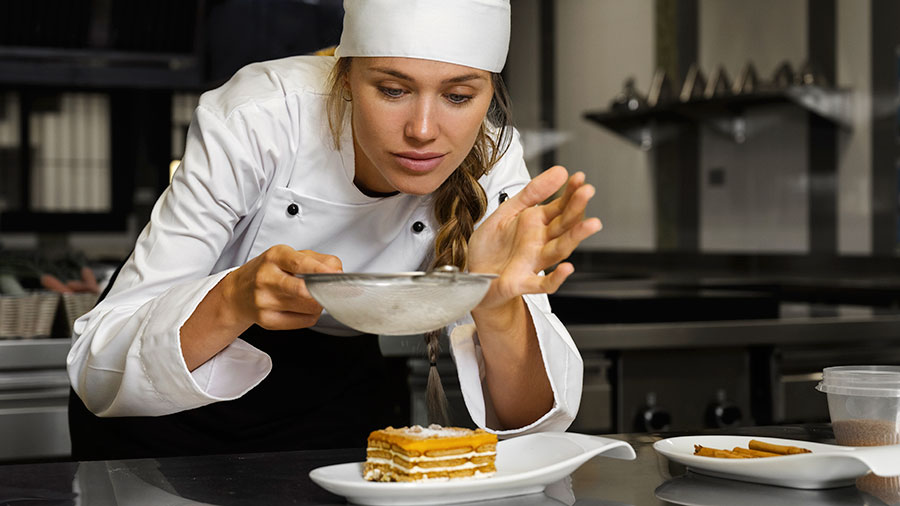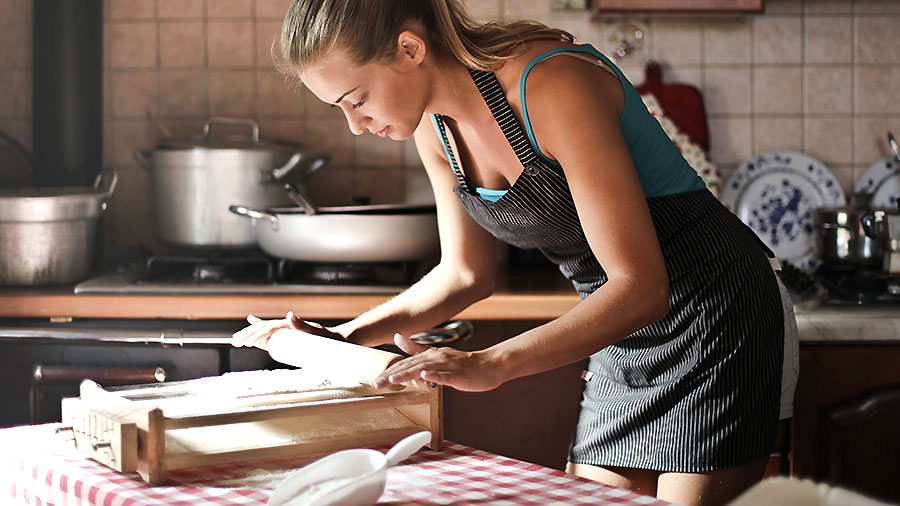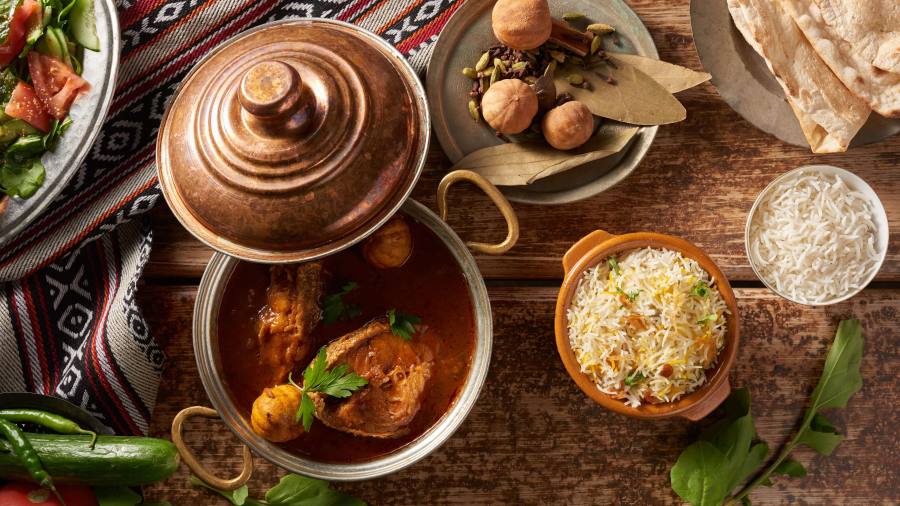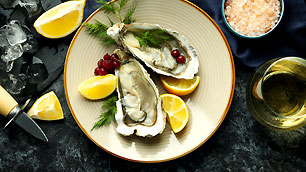Japanese Delights
Katsudon (Pork Cutlet Bowl)
Imagine sinking your teeth into a perfectly crispy pork cutlet, enveloped in a luscious egg mixture, all nestled atop a bed of steaming rice. That's katsudon for you – a Japanese comfort food that's captured hearts worldwide. Let me guide you through creating this mouthwatering dish in your own kitchen.
Chef's Notes:
- Katsudon is a beloved Japanese dish that combines crispy pork, flavorful sauce, and fluffy eggs over rice.
- Achieving the perfect balance of crunch and sauciness is crucial for an authentic katsudon experience.
- This versatile dish can be adapted with different proteins or cooking methods to suit various preferences.
What is Katsudon?
Katsudon is a Japanese culinary masterpiece that marries tonkatsu (a breaded pork cutlet) with a savory-sweet sauce, tender onions, and silky eggs. This harmonious combination is then lovingly placed over a generous portion of fluffy white rice, creating a bowl of pure comfort.
This dish emerged as a clever way to repurpose leftover tonkatsu, but its irresistible flavors quickly earned it a starring role in Japanese cuisine. Now, you'll find katsudon gracing menus in eateries across Japan and beyond, from bustling street-side shops to cozy family kitchens.
Ingredients You'll Need
To craft your own katsudon masterpiece, gather these ingredients:
- 2 boneless pork chops (about 150g each)
- Salt and freshly ground black pepper
- All-purpose flour for dredging
- 1 large egg (for the breading process)
- 1 cup of crispy panko breadcrumbs
- Vegetable oil for frying
- 1 medium onion, sliced into thin crescents
- 2 large eggs (for the topping)
- 2 cups of freshly cooked Japanese short-grain rice
For the tantalizing sauce:
- 1/2 cup of dashi stock (chicken stock works too)
- 2 tablespoons of good-quality soy sauce
- 2 tablespoons of sweet mirin
- 1 tablespoon of sake (rice wine)
- 1 tablespoon of granulated sugar
Step-by-Step Instructions
Preparing the Pork Cutlet
1. Gently pound the pork chops to an even 1cm thickness.
2. Season both sides with a pinch of salt and pepper.
3. Create a breading station: flour, beaten egg, and panko breadcrumbs.
4. Heat oil in a large skillet and fry the breaded cutlets until golden and crispy (3-4 minutes per side).
5. Let the cutlets rest on paper towels to absorb excess oil.
Making the Katsudon
1. Whisk together dashi, soy sauce, mirin, sake, and sugar in a small bowl.
2. In a separate pan, warm the sauce mixture over medium heat.
3. Add the sliced onions, cooking until they're soft and translucent.
4. Carefully place the fried pork cutlet on the bed of simmering onions.
5. Gently pour beaten eggs around and over the cutlet and onions.
6. Cover the pan and let it cook for 1-2 minutes until the eggs are just set but still creamy.
Serving
To serve, place a generous scoop of hot rice in a deep bowl and carefully slide the egg-covered cutlet on top. A sprinkle of chopped green onions adds a fresh touch if desired.
The Secret to Perfect Katsudon
The magic of katsudon lies in the delicate balance between the cutlet's crispiness and the flavorful sauce infusion. To nail this, only briefly simmer the cutlet in the sauce before adding the eggs. This preserves some of that delightful crunch.
Another pro tip: use the freshest eggs you can find. The velvety texture of barely-set eggs is what elevates katsudon from good to unforgettable.
Variations and Customizations
While pork is the traditional star, don't hesitate to experiment. Try chicken katsudon for a lighter twist, or bake the cutlet instead of frying for a healthier version.
Vegetarians needn't miss out – a plant-based cutlet or a thick slice of extra-firm tofu, breaded and fried, makes for a delicious meat-free alternative.
Nutrition Facts
Nutrient amount per serving
-
- Calories: 650
- Protein: 35g
- Carbohydrates: 70g
- Fat: 25g
- Fiber: 3g
- Sodium: 980mg
Keep in mind that these values are estimates and may vary depending on specific ingredients and serving sizes.
Pairing Suggestions
While katsudon is a satisfying meal on its own, you can elevate your dining experience with these complementary dishes:
- A steaming bowl of miso soup provides a light, umami-rich contrast to the hearty katsudon.
- Tangy pickled vegetables offer a refreshing crunch and palate-cleansing acidity.
- A cup of fragrant green tea aids digestion and provides a soothing finish to your meal.
Cultural Significance
In Japan, katsudon isn't just delicious – it's considered lucky! Students often enjoy this dish before exams because katsu sounds like the verb for "to win" or "to be victorious." It's a tasty way to boost confidence and invite success!
FAQs
Can I make katsudon ahead of time?
While freshly made is best, you can prep components in advance. Fry the cutlets and prepare the sauce earlier, then assemble with the egg just before serving for optimal texture and flavor.
What's the difference between katsudon and oyakodon?
Both are delightful donburi dishes, but katsudon features a crispy pork cutlet, while oyakodon uses tender chicken. They share similar cooking methods and sauce flavors.
Is katsudon very difficult to make at home?
Not at all! While it involves multiple steps, each one is straightforward. With a bit of practice, you'll be whipping up restaurant-quality katsudon in your own kitchen.
Can I use a different type of bread crumbs?
Panko breadcrumbs provide the ultimate crunch, but regular breadcrumbs can work in a pinch. The result might be slightly less crispy but will still be delicious.
How do I store leftovers?
Katsudon is at its peak when fresh, but leftovers can be stored in an airtight container in the fridge for up to 2 days. Gently reheat in the microwave or on the stovetop, being careful not to overcook the eggs.





























 Gastronomy Cities
Gastronomy Cities
 Amazing Food
Amazing Food
 Chef's Talk
Chef's Talk